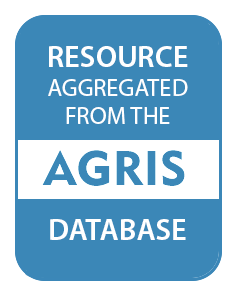What is AGRIS?
AGRIS (International System for Agricultural Science and Technology) is a global public database providing access to bibliographic information on agricultural science and technology. The database is maintained by CIARD, and its content is provided by participating institutions from all around the globe that form the network of AGRIS centers (find out more here). One of the main objectives of AGRIS is to improve the access and exchange of information serving the information-related needs of developed and developing countries on a partnership basis.
AGRIS contains over 8 million bibliographic references on agricultural research and technology & links to related data resources on the Web, like DBPedia, World Bank, Nature, FAO Fisheries and FAO Country profiles.
More specifically
AGRIS is at the same time:
A collaborative network of more than 150 institutions from 65 countries, maintained by FAO of the UN, promoting free access to agricultural information.
A multilingual bibliographic database for agricultural science, fuelled by the AGRIS network, containing records largely enhanced with AGROVOC, FAO’s multilingual thesaurus covering all areas of interest to FAO, including food, nutrition, agriculture, fisheries, forestry, environment etc.
A mash-up Web application that links the AGRIS knowledge to related Web resources using the Linked Open Data methodology to provide as much information as possible about a topic within the agricultural domain.
Opening up & enriching information on agricultural research
AGRIS’ mission is to improve the accessibility of agricultural information available on the Web by:
- Maintaining and enhancing AGRIS, a bibliographic repository for repositories related to agricultural research.
- Promoting the exchange of common standards and methodologies for bibliographic information.
- Enriching the AGRIS knowledge by linking it to other relevant resources on the Web.
AGRIS is also part of the CIARD initiative, in which CGIAR, GFAR and FAO collaborate in order to create a community for efficient knowledge sharing in agricultural research and development.
AGRIS covers the wide range of subjects related to agriculture, including forestry, animal husbandry, aquatic sciences and fisheries, human nutrition, and extension. Its content includes unique grey literature such as unpublished scientific and technical reports, theses, conference papers, government publications, and more. A growing number (around 20%) of bibliographical records have a corresponding full text document on the Web which can easily be retrieved by Google.
Members:
Resources
Displaying 2601 - 2605 of 9579integrated approach for studying the land suitability for ecological corridors through spatial multicriteria evaluations
Nature conservation is a very important issue in the sustainability assessments and spatial planning context. Knowledge of the suitability of the land to behave as an ecological corridor thus provides very significant input to land-use planning. Nature conservation and land-use planning are by their nature spatial problems.
Forest cover change trajectories and their impact on landslide occurrence in the tropical Andes
Tropical mountain regions are prone to landslide hazards. Given the current land pressure with increasing occupation of steep uplands, landslide hazards are expected to increase in the near future. Understanding the factors that control landslide hazards is therefore essential. Rare event logistic regression allows us to perform a robust detection of landslide controlling factors. This technique is here applied to the tropical Andes to evaluate the impact of dynamic land cover changes on landslide occurrences. Land cover change trajectories (i.e.
Improved forest change detection with terrain illumination corrected Landsat images
An illumination correction algorithm has been developed to improve the accuracy of forest change detection from Landsat-derived reflectance data. This algorithm is based on an empirical rotation model and was tested on Landsat image pairs over the Cherokee National Forest, Tennessee; Uinta–Wasatch–Cache National Forest, Utah; San Juan National Forest, Colorado; and Sinkyone Wilderness State Park, California. The illumination correction process successfully eliminated correlation between Landsat reflectance and illumination condition.
Effects of land markets and land management on ecosystem function: A framework for modelling exurban land-change
This paper presents the conceptual design and application of a new land-change modelling framework that represents geographical, sociological, economic, and ecological aspects of a land system. The framework provides an overarching design that can be extended into specific model implementations to evaluate how policy, land-management preferences, and land-market dynamics affect (and are affected by) land-use and land-cover change patterns and subsequent carbon storage and flux.
Dairying in the Antipodes: recent past, near prospects
The majority of dairy farmers and processors in Australia and New Zealand are considered world class due to their ability to produce dairy products at a cost that is competitive on the world market without requirement for subsidy. International and domestic forces beyond the farm influence the international competitiveness of Antipodean dairy systems, as much or more than, the within-farm characteristics of the systems.


